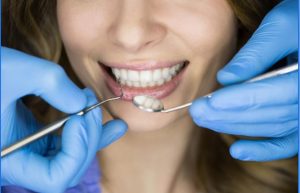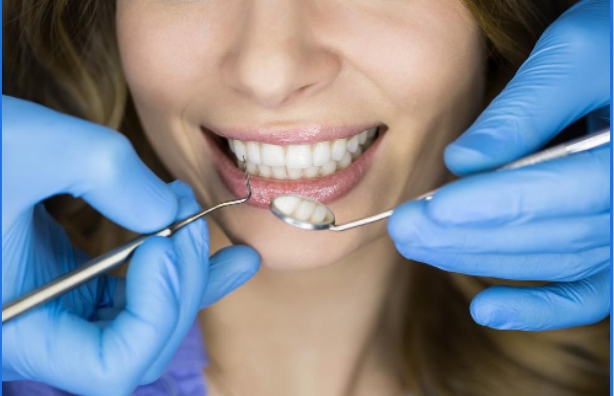Everyone wants to have their teeth for life. Unfortunately, things do not always turn out the way we want them. Even though some adults and teens can quickly get their wisdom teeth out of their mouths, there may be other reasons to extract them. Some of these reasons include;
- Dental Trauma: When the teeth, gum, alveolar bone, associated periodontal ligament, or soft tissues are injured, it could lead to tooth removal.
- Irreparable Diseases of the Tooth: Due to tooth decay, excessive damage to the tooth, or even periodontal diseases are enough to render one’s tooth dead. Crown restoration or root canal processes can be tried, but an extraction might be the last resort if they do not work.
- Dental Crowding: This term refers to the inconsistency caused by jaw or tooth size, resulting in misalignment. Patients with this type of issue usually opt for extraction.
Even those who wear braces may need to perform extraction or shift teeth into place. Others who are under different forms of medical Procedures like chemotherapy or organ transplants may need some extraction to keep their mouths as healthy as possible. However, if you want to find out if you personally need tooth extraction, then click here to learn more.
The safest method of tooth extraction procedures is usually performed by an oral surgeon or dentist and is sometimes a relatively quick procedure with intravenous anesthesia, either local or general. If the teeth are visible, the Procedure is quite easy, but it becomes more complicated if they are broken or hidden under the surface.
Types of Tooth Extraction Process
Depending on the condition of the tooth, impacted or visible, there are two effective procedures for tooth extraction.
Simple Extraction
In this method, you will receive local anesthesia, which will numb the area so you feel no pain but some pressure during the process. Dentists or oral surgeons use a tool called an elevator to loosen it before forceps are used to remove it.
Surgical Extraction
In this method, you might receive both intravenous and local anesthesia. The intravenous anesthesia makes you relaxed and calm. Depending on your medical condition, you may even have to receive general anesthesia. The dentist or oral surgeon may have to cut a little into your gum with a small incision to remove the bone surrounding your teeth before anyone can be removed.
The Procedure for Removal of Teeth
Whether it is a surgical or simple process, its principle is basically the same. Below are the steps for the extraction of teeth;
Numbing the Tooth
Every removal process usually starts with a shot of anesthetic to the gum, tooth, or bone tissue around the teeth. How much you feel pain depends on where the shot of the drug is administered. The steps of numbing include;
- Needle Insertion: The oral surgeon pierces the skin around affected teeth in pin-prick style. The pain lasts only a split second or may even be painless.
- Needle Placement: Once the needle has been inserted, the doctor moves it to where they intend to administer the anesthetic. You may then feel slight discomfort, but the doctor may have ways to minimize it.
- Depositing the Anesthetic: Once the needle is placed, the anesthetic is then released into the area. You will then feel numbness in the gum, a necessary step that must be carried out before extraction.

Teeth Removal
The affected tooth is then pulled from its jawbone socket. Usually, teeth are placed firmly in its socket and properly held together by ligaments. So the doctor has to enlarge this socket to separate teeth from the ligament before pulling it out of its socket.
Spongy bone covers the teeth root, so rocking the tooth back and forth against these walls causes the bone to release it due to enough space created in the ligament. If pressure is to be applied, dentists use tools called extraction forceps and elevators.
- Extraction Forceps: These are instruments that look like pliers used to pull and grasp teeth. Different extraction forceps are suitable for different teeth shapes and can apply direct pressure to any area.
- Dental Elevators: These are like screwdrivers but are used to drive a wedge between surrounding bone and teeth. The dentist can expand the teeth socket by forcing the elevation into teeth space and twisting and rocking it till it comes off. You will feel pressure but not the pain as long as the anesthetic is administered correctly.
Gap Closure and Bleeding Control
The oral surgeon will have to close the gap since the socket is open. Some of the steps to do so are;
- Removing pathological or infected tissue by scraping socket walls. Fingers may even be used to bring it to standard size.
- Rounding up any sharp edges and observing carefully for sinus complications.
- Washing the socket to eliminate loose bone or tooth fragments. They can even use gauze to stop gum bleeding.
- Stitching up the site of removal of several teeth was removed at once. The patient may be asked to bite down for about an hour for firm pressure to control bleeding.
Post-Removal Care
You may be given an ice pack to put against your face if the dentist suspects post-operative swelling. You will then need some time to recover, maybe a few days. During this period, you have to limit the chances of infection, speed up recovery, and minimize discomfort in the ways you will be instructed to.
Are There Any Risks Associated with this Procedure?
As is with almost everything in life, there are always risks. However, if a professional handle the process, the benefits will likely outweigh the chances of complications. Usually, after this process, a blood clot forms in the hole where the teeth used to be. If this does not happen, it can be said that there is a ‘dry socket.’
Sedative dressing can then be put over the area to protect it. There may also be severe fever and chills, which may signify the presence of an infection, cough, vomiting or nausea, constant bleeding, soreness and swelling in the area, chest pain, and shortness of breath. You can check this page for ways to stay safe and pain-free after a dental procedure.
What is the Recovery Period after this Process?
It takes a few days to recover fully, but some measures must be strictly adhered to before the healing and recovery become seamless. Take all prescribed medication, rest and relax, spit out gently, don’t smoke, avoid a straw for some time, avoid the removal area while brushing, eat soft foods for a while, use pillows to prop your head up as you lie down, etc. Book an appointment with your doctor if you feel like the recovery is taking too long. However, this professional dentist in Jefferson City highly recommends that you visit your dentist immediately if the pain persists.
Take Away
Good oral surgeons or dentists carry out this process in the best way possible, but don’t get it wrong; there is no fun in this. The process can be avoided if one practices oral hygiene and stays healthy, so be healthy.








